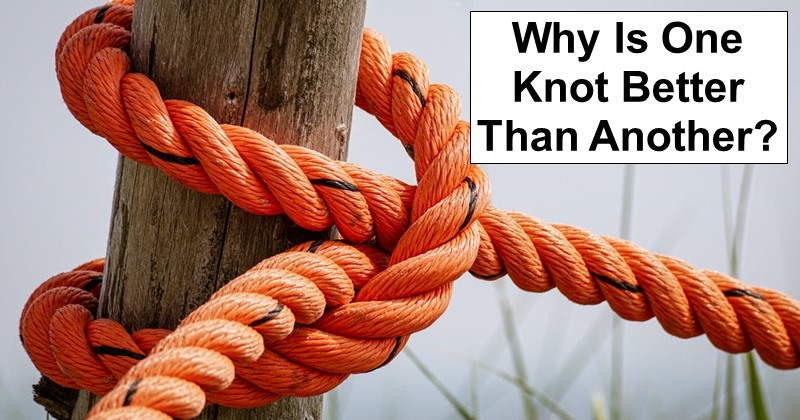Perhaps you instinctively know that a square knot is stronger than a granny knot, but why? Like this article points out, they’re almost identical when finished, so one would assume that they would also equal in strength, but that’s not true as generations of actual use indicates.
Interestingly, researchers have figured out that by using both mathematical calculations and special color-changing fibers how to predict whether a knot will be stronger or not based on two factors: twist fluctuations (“changes in the direction of rotation from one strand segment to another”) and circulations (“a region in a knot where two parallel strands loop against each other in opposite directions”).
Basically, if a knot has more loops back on itself as well as more opposite twisting–which I would’ve though was bad–then a knot is likely to be stronger. Scientists say that they can now use their models to “…play knots against each other for uses in suturing, sailing, climbing, and construction. It’s wonderful.”
I think it’s wonderful too! Who knows what potentially new and interesting knots they might come up with? Perhaps they’ll improve upon the knots we already know and love to make them even better? I don’t know, but I do know that if you don’t yet have a good field guide to knots book, you’re missing out on a vast wealth of knowledge every prepper should have on hand for now and SHTF. Enjoy. 🙂
Here’s the first part of the article:
“In sailing, rock climbing, construction, and any activity requiring the securing of ropes, certain knots are known to be stronger than others. Any seasoned sailor knows, for instance, that one type of knot will secure a sheet to a headsail, while another is better for hitching a boat to a piling.
But what exactly makes one knot more stable than another has not been well-understood, until now.
MIT mathematicians and engineers have developed a mathematical model that predicts how stable a knot is, based on several key properties, including the number of crossings involved and the direction in which the rope segments twist as the knot is pulled tight.”

Leave a Reply